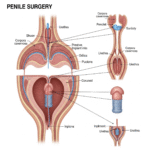Otoplasty is often viewed as a cosmetic procedure to enhance the appearance of the ears, especially for those who feel self-conscious about protruding or misshapen ears. However, in many cases, otoplasty serves a medically necessary purpose beyond aesthetics. Whether correcting congenital ear deformities, repairing trauma-related injuries, or improving hearing issues caused by structural abnormalities, otoplasty can be vital for both physical and emotional well-being.

What Is Otoplasty and Who Can Benefit from It?
Otoplasty refers to surgical procedures aimed at reshaping, repositioning, or reconstructing the outer ear (also known as the pinna or auricle). While most people associate it with cosmetic enhancements, such as pinning back ears that stick out, the surgery can also address medical conditions that affect function or development. Children and adults alike may be candidates for otoplasty depending on their condition and needs.
Otoplasty is usually performed under local or general anesthesia and can take one to two hours. Patients can expect a relatively short recovery time, similar to procedures like a face lift or eyelid surgery, with visible results that can significantly boost confidence and self-image.
Can Otoplasty Be Medically Necessary?
What Functional Problems Can Otoplasty Solve?
Although often elective, otoplasty can be medically necessary in certain situations. These include:
Congenital Ear Deformities
Babies born with conditions like microtia (underdeveloped ears), anotia (missing ears), or lop ear (floppy ear tips) may require surgical intervention. In these cases, otoplasty plays a reconstructive role and can restore a more typical appearance and support the use of hearing aids or improve natural hearing.
Trauma-Related Injuries
Accidents, sports injuries, or burns that damage the ear structure can lead to both aesthetic and functional impairments. Reconstructive otoplasty helps restore the ear’s form and function. This can be especially important when trauma affects the ear canal, which might impact hearing.
Hearing Support
While otoplasty doesn’t directly improve hearing, certain ear deformities can obstruct the auditory canal, indirectly affecting hearing. Reconstructive surgery can improve the placement of the outer ear to better support assistive hearing devices.
When Is Otoplasty Covered by Insurance?
Insurance providers typically do not cover cosmetic procedures, but they may cover otoplasty if it’s medically necessary. This includes congenital defects, reconstructive surgery post-trauma, or correction of defects that interfere with normal function. A medical evaluation and documentation from a specialist are usually required to prove necessity.
Why Patients Choose Otoplasty in Turkey
Is Turkey a Trusted Destination for Reconstructive and Cosmetic Ear Surgery?
Yes, Otoplasty in Turkey has gained global recognition due to the country’s combination of high-quality healthcare services, experienced surgeons, and affordable pricing. Medical tourists often bundle procedures, combining otoplasty with other treatments such as a face lift or eyelid surgery, benefiting from significant cost savings without compromising safety.
Patients choose Turkey not only for the price but for state-of-the-art clinics, internationally accredited hospitals, and multilingual healthcare professionals who offer comprehensive care from consultation to recovery.
What’s Included in Otoplasty Packages in Turkey?
Typical otoplasty packages in Turkey include:
- Surgeon’s consultation and diagnostic tests
- Hospital and anesthesia fees
- Post-operative medications and check-ups
- Accommodation and transfers
- Optional recovery assistance and guided tourism
This all-inclusive approach makes otoplasty in Turkey attractive, especially for patients combining cosmetic goals with functional needs.
How to Know If You Need Cosmetic or Reconstructive Otoplasty?
Is the Procedure Right for You?
If your ears cause you emotional discomfort or if you were born with a deformity or sustained an injury, consulting an ENT specialist or plastic surgeon is the first step. They will evaluate your ear structure, hearing function, and medical history to determine if otoplasty is purely cosmetic or has medical justification.
You may be a good candidate if:
- You have congenital ear deformities
- You’ve experienced ear trauma
- You need reconstructive support for hearing aids
- You suffer from emotional distress due to ear shape
Children can undergo otoplasty from around age 5–6, when the ear cartilage is stable enough to be reshaped. Adults of any age can also benefit.
Frequently Asked Questions
Is otoplasty painful?
Otoplasty is usually not painful. Surgeons use anesthesia during the procedure, and most patients experience only mild discomfort post-surgery, similar to what’s felt after minor facial procedures like a face lift.
How long is the recovery time?
Most patients return to normal activities within one week. A headband may be required for several days to maintain the new ear position and support healing.
Can the results be permanent?
Yes. Once healed, the results of otoplasty are generally permanent, making it a long-lasting solution for both aesthetic and functional concerns.
Otoplasty Is More Than a Cosmetic Procedure
In summary, otoplasty is not just about improving appearance — it can be medically essential for individuals with congenital defects, traumatic injuries, or structural issues affecting hearing and quality of life. Whether you’re seeking this procedure for cosmetic reasons or due to functional concerns, otoplasty offers real benefits and lasting results.
Considering otoplasty in Turkey allows patients access to world-class care at competitive prices, often in combination with other treatments like face lift or eyelid surgery. To ensure the best outcomes, consult with a qualified specialist to evaluate your specific needs and explore all available options.



